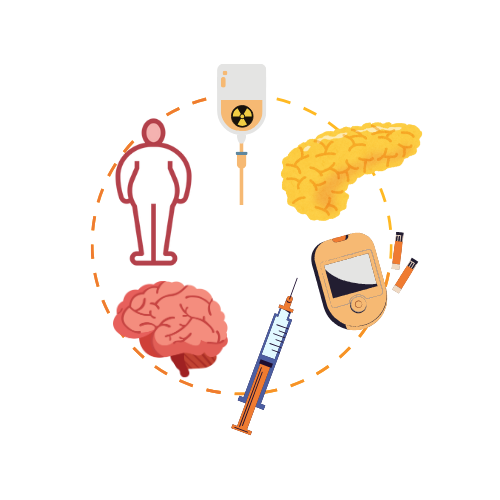Research
Diabetes, endocrine disorders and cancers
Insulin producing beta cells, located in the islets of Langerhans in the pancreas, play a key role in blood glucose regulation. In diabetes this blood glucose regulation is disrupted and repeated episodes of high blood glucose levels (hyperglycemia) occur. The underlying mechanism of hyperglycemia depends on the type of diabetes. Autoimmune destruction of beta cells in type 1 diabetes (T1D) results in insulin deficiency causing hyperglycemia. In type 2 diabetes (T2D) hyperglycemia is primarily caused by insulin resistance, usually followed by loss of beta cell function and eventually beta cell mass. Changes in beta cell mass in both types of diabetes are poorly understood, due to the lack of a non-invasive method to measure beta cell mass.
We have developed a radiotracer that specifically accumulates in beta cells and has high potential for in vivo measurement of beta cell mass using PET/CT imaging. This tracer, radiolabeled exendin, has been characterized extensively in both animals and humans and shows great potential for non-invasive measurement of beta cell mass. Besides the quantificaiton of beta cell mass in the pancreas, this imaging technique can be used to quantify uptake of radiolabeled exendin in the pituitary.

